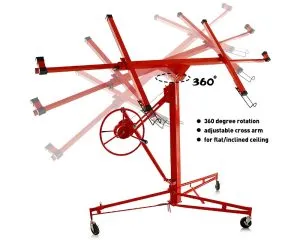Welcome to our online store!
Feb . 05, 2025 03:48
Back To List
3 ton car jack stands
Auto jacks and stands are indispensable tools for car enthusiasts, professional mechanics, and anyone who wants to ensure safety and precision when performing maintenance or repairs under a vehicle. These tools not only provide support for heavy vehicles but also offer stability during delicate operations. Given their critical role, selecting the right jack and stand is a decision that merits careful consideration of quality, functionality, and safety standards.
2. Ratchet Stands Easy to adjust, these stands have a ratcheting mechanism to set height securely. However, it’s crucial to ensure their quality to avoid failure under load. Factors to Consider Safety should guide every decision regarding car maintenance tools. Always select stands with a higher weight rating than your vehicle’s weight. The construction material impacts portability and durability, with steel again being a heavier, more durable option compared to aluminum. Experience in Utilizing Jacks and Stands Using jacks and stands requires adherence to stringent safety protocols. Here are some expert notes - Always park on a level surface and engage the parking brake before lifting the vehicle. - Locate the vehicle’s specific jacking points, which are reinforced areas designed to handle the stress of lifting. - Use wheel chocks to prevent the vehicle from rolling during operation. - Ensure jack stands are securely placed under the recommended points before lowering the car from the jack. Professional Insights As automotive technology evolves, hydraulic and electronic systems in jacks and stands are improving efficiency and safety. Newer models offer advanced features like digital readouts for weight and height, reducing manual errors. Trustworthiness in Brands Invest in brands known for quality and reliability. Respected manufacturers in the automotive tool industry undergo rigorous testing and comply with safety standards such as ASME PASE (Portable Automotive Service Equipment) certifications. Final Thoughts Auto jacks and stands are critical for anyone involved in vehicle maintenance. While they offer substantial utility, improper use can lead to accidents. Therefore, it’s imperative to invest in high-quality tools and adhere rigorously to manufacturer instructions and safety guidelines. Making an informed choice not only extends the lifespan of your tools but also assures peace of mind during every maintenance task under your vehicle.


2. Ratchet Stands Easy to adjust, these stands have a ratcheting mechanism to set height securely. However, it’s crucial to ensure their quality to avoid failure under load. Factors to Consider Safety should guide every decision regarding car maintenance tools. Always select stands with a higher weight rating than your vehicle’s weight. The construction material impacts portability and durability, with steel again being a heavier, more durable option compared to aluminum. Experience in Utilizing Jacks and Stands Using jacks and stands requires adherence to stringent safety protocols. Here are some expert notes - Always park on a level surface and engage the parking brake before lifting the vehicle. - Locate the vehicle’s specific jacking points, which are reinforced areas designed to handle the stress of lifting. - Use wheel chocks to prevent the vehicle from rolling during operation. - Ensure jack stands are securely placed under the recommended points before lowering the car from the jack. Professional Insights As automotive technology evolves, hydraulic and electronic systems in jacks and stands are improving efficiency and safety. Newer models offer advanced features like digital readouts for weight and height, reducing manual errors. Trustworthiness in Brands Invest in brands known for quality and reliability. Respected manufacturers in the automotive tool industry undergo rigorous testing and comply with safety standards such as ASME PASE (Portable Automotive Service Equipment) certifications. Final Thoughts Auto jacks and stands are critical for anyone involved in vehicle maintenance. While they offer substantial utility, improper use can lead to accidents. Therefore, it’s imperative to invest in high-quality tools and adhere rigorously to manufacturer instructions and safety guidelines. Making an informed choice not only extends the lifespan of your tools but also assures peace of mind during every maintenance task under your vehicle.
Prev:
Next:
Products categories
Latest News
-
Unraveling the World of Car Jack Economics and Acquisition
NewsJun.24,2025 -
Unraveling the Essentials of Car Jacks and Their Operations
NewsJun.24,2025 -
Unraveling the Capabilities of 10 - Ton Porta Power Equipment
NewsJun.24,2025 -
Unraveling Issues and Solutions in Car Jack Systems
NewsJun.24,2025 -
Unleashing the Potential of 10 - Ton Hydraulic Equipment
NewsJun.24,2025 -
Power and Precision in Heavy - Duty Lifting: 10 Ton Porta Power Solutions
NewsJun.24,2025 -
What Makes Car Shop Jacks and Related Tools Indispensable for Vehicle Maintenance?
NewsJun.12,2025















